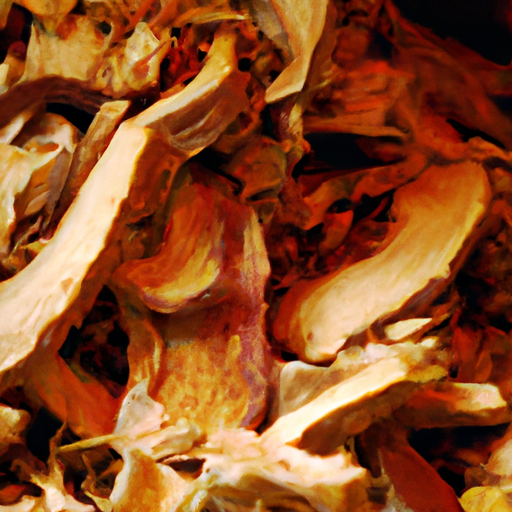The History and Evolution of Traditional Chinese Medicine (TCM)
Traditional Chinese Medicine (TCM) is an ancient healing system that has been practiced for thousands of years. Its roots can be traced back to ancient China, where it was developed based on the principles of Yin and Yang, as well as the Five Elements. TCM encompasses a wide range of practices, including acupuncture, herbal medicine, and dietary therapy, all aimed at restoring balance and harmony within the body.
The history of TCM is rich and fascinating, with its origins dating back to the Shang Dynasty (1600-1046 BC). During this time, the Chinese people began to observe the natural world around them and noticed patterns and connections between various elements. This led to the development of the Yin and Yang theory, which states that all things in the universe are interconnected and exist in a state of balance.
As TCM evolved, so did its pharmacopoeia. The ancient Chinese herbalists began to experiment with different plants and minerals, discovering their medicinal properties and how they could be used to treat various ailments. These discoveries were recorded in ancient texts, such as the Huangdi Neijing (Yellow Emperor’s Inner Canon), which is considered one of the foundational texts of TCM.
One of the key principles of TCM is the concept of Qi, or vital energy, which flows through the body along specific pathways called meridians. When Qi becomes blocked or imbalanced, it can lead to illness and disease. Herbal medicine is often used in TCM to help restore the flow of Qi and bring the body back into balance.
The TCM pharmacopoeia is vast and diverse, with thousands of herbs and substances that can be used for medicinal purposes. These herbs are classified according to their properties and actions, such as whether they are warming or cooling, and whether they tonify or disperse Qi. Some commonly used herbs in TCM include ginseng, astragalus, and licorice root, each with its own unique properties and benefits.
Over the centuries, TCM has continued to evolve and adapt to the changing needs of society. Today, it is practiced not only in China but also in many other parts of the world. In recent years, there has been a growing interest in TCM and its potential benefits, leading to increased research and scientific studies to validate its effectiveness.
While TCM has its critics, many people have found relief and healing through its practices. Its holistic approach to health and well-being, focusing on the interconnectedness of the body, mind, and spirit, resonates with those seeking a more natural and balanced approach to healthcare.
In conclusion, the history and evolution of TCM is a testament to the wisdom and ingenuity of ancient Chinese herbalists. Their observations and discoveries have laid the foundation for a comprehensive system of medicine that continues to be practiced and valued today. As more research is conducted and our understanding of TCM deepens, we can expect to uncover even more of its secrets and unlock its full potential for healing and wellness. Whether you are seeking relief from a specific ailment or simply looking to enhance your overall well-being, TCM offers a time-tested and holistic approach that is worth exploring.
Exploring the Healing Properties of Traditional Herbal Remedies

Herbal Lore: The Age-old TCM Pharmacopoeia
Traditional Chinese Medicine (TCM) has a rich history that spans thousands of years. One of the pillars of this ancient healing system is the use of herbal remedies. These remedies, derived from plants and natural substances, have been used for centuries to treat a wide range of ailments. Today, we will explore the healing properties of traditional herbal remedies and delve into the fascinating world of TCM pharmacopoeia.
In TCM, the belief is that the body is a complex system that must be in balance in order to maintain good health. When this balance is disrupted, illness and disease can occur. Herbal remedies are used to restore this balance and promote healing. The TCM pharmacopoeia is a vast collection of herbs and substances that have been carefully studied and categorized based on their properties and effects on the body.
One of the most well-known herbs in TCM is ginseng. This powerful root has been used for centuries to boost energy, improve mental clarity, and strengthen the immune system. Ginseng is considered an adaptogen, meaning it helps the body adapt to stress and restore balance. It is often used to combat fatigue, enhance physical performance, and support overall well-being.
Another popular herb in TCM is astragalus. This root has immune-boosting properties and is often used to prevent and treat respiratory infections, such as the common cold and flu. Astragalus is also believed to have anti-inflammatory effects and can support cardiovascular health. It is often used in combination with other herbs to strengthen the body’s defenses and promote longevity.
TCM also utilizes herbs such as turmeric and ginger, which have powerful anti-inflammatory properties. These herbs are often used to treat conditions such as arthritis, digestive disorders, and skin conditions. Turmeric, in particular, contains a compound called curcumin, which has been extensively studied for its potential anti-cancer properties. Ginger, on the other hand, is known for its ability to soothe the digestive system and alleviate nausea.
In addition to individual herbs, TCM also emphasizes the importance of herbal formulas. These formulas are carefully crafted combinations of herbs that work synergistically to address specific health concerns. For example, the formula known as Xiao Yao San is often used to treat stress, anxiety, and hormonal imbalances in women. It contains herbs such as bupleurum, peony, and dong quai, which work together to calm the mind, regulate the menstrual cycle, and promote emotional well-being.
While TCM herbal remedies have been used for centuries, it is important to note that they are not a one-size-fits-all solution. Each individual is unique, and what works for one person may not work for another. It is always best to consult with a qualified TCM practitioner who can assess your specific needs and create a personalized treatment plan.
In conclusion, the TCM pharmacopoeia is a treasure trove of herbal remedies that have been used for centuries to promote health and well-being. From ginseng to astragalus, turmeric to ginger, these herbs offer a natural and holistic approach to healing. Whether used individually or in carefully crafted formulas, TCM herbal remedies have stood the test of time and continue to provide hope and healing for those seeking alternative solutions to their health concerns. So why not explore the age-old wisdom of TCM and discover the healing properties of traditional herbal remedies for yourself?
Unveiling the Secrets of Herbal Formulas in TCM
Herbal Lore: The Age-old TCM Pharmacopoeia
Have you ever wondered about the ancient wisdom behind Traditional Chinese Medicine (TCM)? TCM has been practiced for thousands of years and is based on the belief that the body’s energy, or Qi, flows through meridians. When this energy is disrupted, it can lead to illness. To restore balance, TCM practitioners often turn to herbal formulas, which have been passed down through generations. These formulas are a treasure trove of herbal lore, containing the secrets to healing and wellness.
One of the fascinating aspects of TCM herbal formulas is their complexity. Unlike Western medicine, which often relies on a single active ingredient, TCM formulas are carefully crafted combinations of herbs. Each herb plays a specific role, working in harmony with the others to address the root cause of the ailment. This holistic approach is what sets TCM apart and makes it so effective.
The TCM pharmacopoeia is vast, with hundreds of herbs and countless combinations. Some of the most commonly used herbs include ginseng, astragalus, and licorice root. These herbs have been studied extensively and are known for their immune-boosting properties. Other herbs, such as ginger and cinnamon, are used to warm the body and improve circulation. Each herb has its own unique properties and benefits, and TCM practitioners carefully select the right combination for each patient.
But how do these herbal formulas actually work? TCM believes that herbs have energetic properties that can influence the body’s Qi. For example, if someone is experiencing a deficiency of Qi, they may be prescribed herbs that tonify or strengthen the Qi. On the other hand, if someone has an excess of Qi, they may be given herbs that disperse or move the Qi. By restoring balance to the body’s energy, TCM formulas can help alleviate symptoms and promote overall wellness.
One of the most well-known TCM formulas is Yin Qiao San, which is often used to treat the common cold. This formula combines herbs like honeysuckle flower, forsythia fruit, and peppermint to clear heat and relieve sore throat. Another popular formula is Bu Zhong Yi Qi Tang, which is used to tonify the Qi and strengthen the spleen. This formula contains herbs like astragalus, ginseng, and licorice root, which work together to boost energy and improve digestion.
While TCM formulas have been used for centuries, they are not static. TCM practitioners continue to refine and adapt these formulas to meet the needs of modern patients. They may add or remove herbs based on new research or adjust dosages to achieve optimal results. This dynamic approach ensures that TCM remains relevant and effective in today’s world.
In conclusion, the TCM pharmacopoeia is a treasure trove of herbal lore, containing the secrets to healing and wellness. These ancient formulas, carefully crafted combinations of herbs, have been passed down through generations and continue to be used today. By understanding the energetic properties of herbs and their effects on the body’s Qi, TCM practitioners can create personalized formulas to address the root cause of illness. Whether it’s treating the common cold or tonifying the Qi, TCM formulas offer a holistic approach to health and well-being. So next time you’re seeking natural remedies, consider exploring the age-old wisdom of TCM herbal lore.


